Visit The Arulmigu Ramanathaswamy Temple For A Spiritual Retreat In Tamil Nadu In 2026

Have you ever been to a place that feels magical and spiritual at the same time? The Arulmigu Ramanathaswamy Temple in Rameswaram Tamil Nadu is just that. This beautiful and ancient temple is dedicated to Lord Shiva. When you walk through endless corridors and marvel at amazing ancient architecture you’ll be amazed to get a spiritual calmness. The temple has a rich history linked to the epic Ramayana. The legend says that Lord Rama himself prayed here. Due to its peaceful vibe and the legend associated, it has become a popular temple. Read this article to know more.
Arulmigu Ramanathaswamy Temple: An Overview
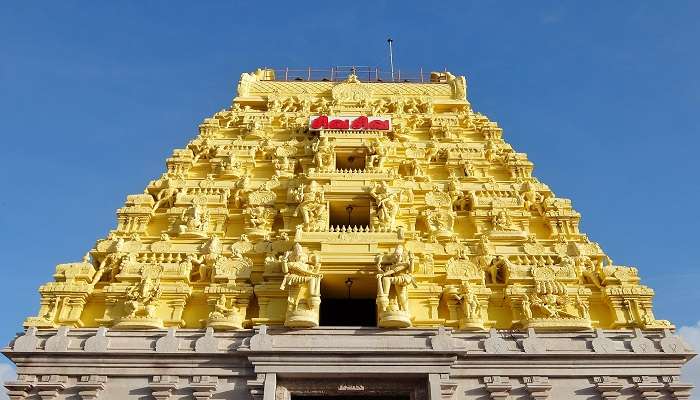
The Ramanathaswamy Temple is situated on Rameswaram island in Tamil Nadu and is dedicated to Lord Shiva. It is one of the twelve Jyotirlinga temples, considered very sacred in Hinduism. The temple is also recognised among the 275 Paadal Petra Sthalams, which are praised in the hymns of Saivite saints like Appar, Sundarar, and Tirugnana Sambandar.
According to legend, the Lingam (symbol of Lord Shiva) at Ramanathaswamy Temple was established by Lord Rama himself before he went to Sri Lanka. This temple is also part of the Char Dham pilgrimage sites.
Originally built during the Pandya Dynasty in the 12th century, the temple has India’s longest temple corridor, which was added later by King Muthuramalinga Sethupathy. It has been renovated and expanded over the years, attracting pilgrims from Shaivite, Vaishnavite, and Smartha traditions because of its sacred importance.
Must Read: Jambukeswarar Temple
Arulmigu Ramanathaswamy Temple History
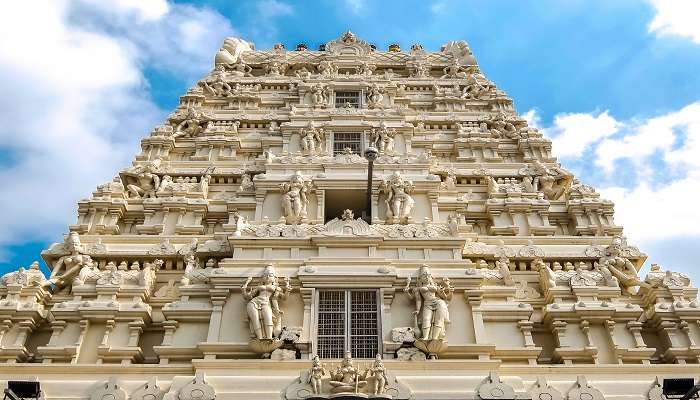
During the early 14th century, Malik Kafur, the chief general of Alauddin Khalji, the ruler of the Delhi Sultanate, led a military campaign that included Rameswaram despite fierce opposition from the Pandyan princes. In his conquest, he erected a mosque named Alia al-Din Khaldji to commemorate his victory for Islam. Historical records from the Delhi Sultanate’s court historians recount Malik Kafur’s raids on sacred towns such as Madurai, Chidambaram, Srirangam, Vriddhachalam, and Rameswaram. Temples, regarded as repositories of wealth, were plundered for their gold and jewels, with vast treasures brought back to Delhi in 1311.
The present structure of the Arulmigu Ramanathaswamy Temple is believed to have been constructed in the 17th century, although Fergusson suggests the small vimana in the west corridor may date back to the 11th or 12th century. King Kizhavan Sethupathi, or Raghunatha Kilavan, is credited with sanctioning the temple’s construction, with significant contributions also recorded from the Jaffna kings of the Pandya Dynasty.
Notably, King Jeyaveera Cinkaiariyan (1380–1410 CE) facilitated the transportation of stone blocks from Koneswaram Temple in Trincomalee to renovate the sanctum sanctorum of Arulmigu Ramanathaswamy Temple. His successor, Gunaveera Cinkaiariyan (Pararacacekaran V), oversaw structural enhancements and supported Saivite beliefs, contributing some of his revenues to Koneswaram. The Sri Lankan monarchs also played a pivotal role in the temple’s development, with King Parakrama Bahu (1153–1186 CE) contributing to constructing its sanctum sanctorum. King Nissanka Malla donated and dispatched workers to aid in the temple’s expansion.
In 1667 CE, Perumal Servaikaran, son of Sokkappan Servaikarar and a local chieftain under Tirumalai Regunatha Sethupathy Thevar of the Ramnad Kingdom, donated the villages of Pappakudi, Anandur, and Urasur to the Rameshwaram Temple. The Government Press, Madras Presidency, documented these grants in 1885 for the Archaeological Survey of India. Rameswaram Temple remains a renowned pilgrimage site with a rich history, supported by contributions from Maratha kings who ruled Thanjavur between 1745 and 1837 CE. They established rest houses, known as chatrooms, across Mayiladuthurai and Rameswaram, which were subsequently donated to the temple.
Architecture And Design
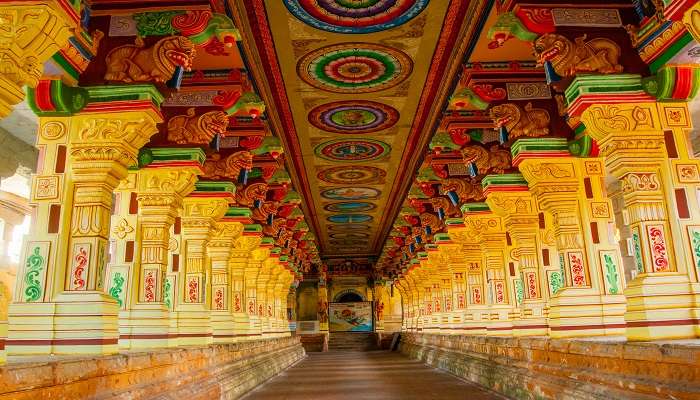
The Arulmigu Ramanathaswamy Temple venerates Shiva in the form of a lingam. Inside the sanctum are two lingams: the Ramalingam, said to be fashioned by Rama himself from sand and considered the primary deity, and the Vishvalingam, brought by Hanuman from Kailash. Tradition dictates that the Vishvalingam is worshipped first, following Rama’s instruction. This practice has endured through the ages.
Like many ancient South Indian temples, the temple is enclosed by a high compound wall on all sides, boasting impressive Gopurams (towers) to the east and west and gate towers to the north and south. Its architecture includes expansive corridors with towering colonnades, notably the outer corridors among the longest globally. These corridors feature intricate sandstone pillars and form unique structures like the Chokkattan Madapam, which are used for festive celebrations.
The Arulmigu Ramanathaswamy Temple’s historical development spans centuries, with significant contributions from various rulers, including the Setupatis of Ramanathapuram. The renowned third corridor, Chokkatan Mandapam, was erected in the late 18th century under Muthuramalinga Setupati’s patronage. Noteworthy additions include composite columns depicting Virabhadra, contributed during the Vijayanagara era.
Apart from its architectural grandeur, the temple precinct includes separate shrines for Parvathavardhini, Vishalakshi, Vishnu, and Ganesha and a special shrine dedicated to the sage Patanjali. It also houses several halls, such as Anuppu Mandapam, Sukravara Mandapam, and Setupati Mandapam, each serving unique ceremonial purposes.
Suggested Read: Brihadeeswarar Temple
Arulmigu Ramanathaswamy Temple Timings
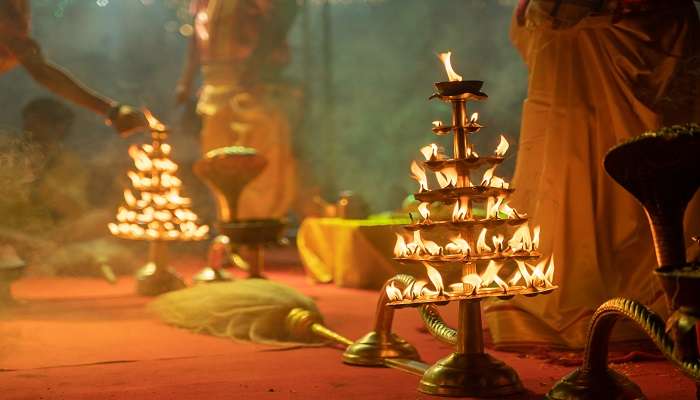
Here’s a detail about the opening and closing duration of Arulmigu Ramanathaswamy Temple timings:
| Time | Activity |
| 5:00 AM | Temple Opens |
| 1:00 PM | Temple closes for the afternoon |
| 3:00 PM | Temple reopens |
| 9:00 PM | Temple closes for the night |
Arulmigu Ramanathaswamy Temple Dress Code

When visiting the Arulmigu Ramanathaswamy Temple it’s important to dress appropriately. Here’s the ideal dress code:
For Men
- Traditional attire
- Kurta-pyjamas
- Shirts and pants
For Women
- Saree and blouse
- Salwar kameez or Punjabi dress with a dupatta
- Churidar with a dupatta
- A half saree is also appropriate
General Guidelines
- Avoid tight or revealing outfits.
- Wet clothes are not permitted inside the temple after the ritual baths.
Suggested Read: Places To Visit In Ramanathapuram
Significance of Arulmigu Ramanathaswamy Temple
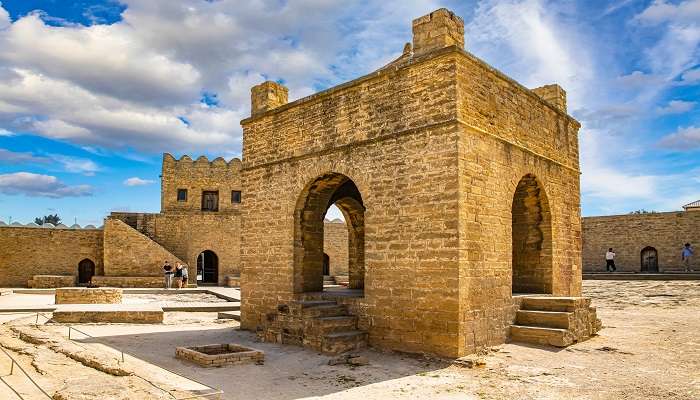
The Arulmigu Ramanathaswamy Temple, located in Rameswaram, Tamil Nadu, is one of the most revered temples in Hinduism.:
- The temple is one of the Char Dham pilgrimage centres, along with Badrinath Dwarka and Puri.
- It is the home of one of the twelve Jyotirlingas, which are manifestations of Lord Shiva’s infinite form.
- In the epic Ramayana, Lord Rama performed penance to Shiva here to redeem himself for killing Ravana.
- The temple contains 22 holy water sources. This is considered a purification process, whereby people wash their sins away in these wells, which is essential to the pilgrimage.
Further Read: Places To Visit In Avadi That Tell The Tales Of Its Heritage
Further Read: Places To Visit In Avadi
The Arulmigu Ramanathaswamy Temple in Tamil Nadu is a stunning example of our cultural history. It has detailed architecture, beautiful carvings, and a spiritual atmosphere that stays with visitors. Whether you’re looking for spiritual insight or a glimpse into the state’s past, this temple is definitely worth a visit! If you’re fascinated by the beauty of this ancient wonder, why not go on a journey to discover its amazing attractions? Book your trip to Tamil Nadu today and immerse yourself in the vibrant tapestry of history, spirituality, and natural splendour that this incredible state has to offer.
For our editorial codes of conduct and copyright disclaimer, please click here.
Cover Image Source: Shutterstock
Frequently Asked Questions About Arulmigu Ramanathaswamy Temple
What is Special About Arulmigu Ramanathaswamy Temple?
Arulmigu Ramanathaswamy Temple is renowned as one of the twelve Jyotirlingas, celebrated for its extensive temple corridor and intricate Dravidian architecture, deeply rooted in the Ramayana.
What is the Story Behind 22 Wells in Rameshwaram?
The 22 wells in Rameshwaram were created by Lord Rama using his arrow for purification purposes. Each well contains water believed to cleanse sins and heal ailments.
Is Rameshwaram a Dham or a Jyotirlinga?
Rameshwaram is a revered holy place because it is both a Char Dham pilgrimage site and one of the twelve Jyotirlingas.
What Are the Benefits of Rameshwaram Temple?
Visiting Rameshwaram Temple is believed to purify the soul, absolve sins, and bring peace and prosperity. Rituals and holy baths here are said to aid spiritual growth and alleviate past karma.
What Are the Rules for Rameswaram Temple?
When visiting Rameswaram Temple, dress modestly, with men wearing dhotis and women wearing sarees. Take ritual baths before darshan, maintain silence, and refrain from photographing inside the temple premises.
People Also Read:
Karnak Temple Thien Hau Temple Shri Chamunda Devi Mandir

Innovative Content Writer Focused on Producing High quality, Original Content that drives traffic and engages readers. Experienced in Content strategy and analytics to measure content performance using tools such as SQL, Power BI, Excel.











